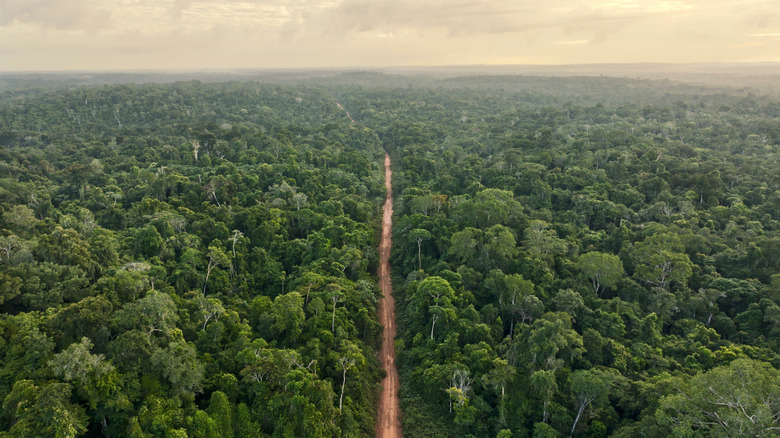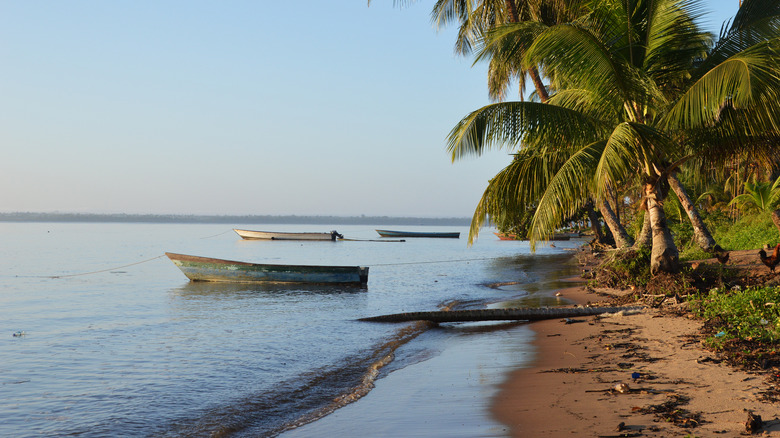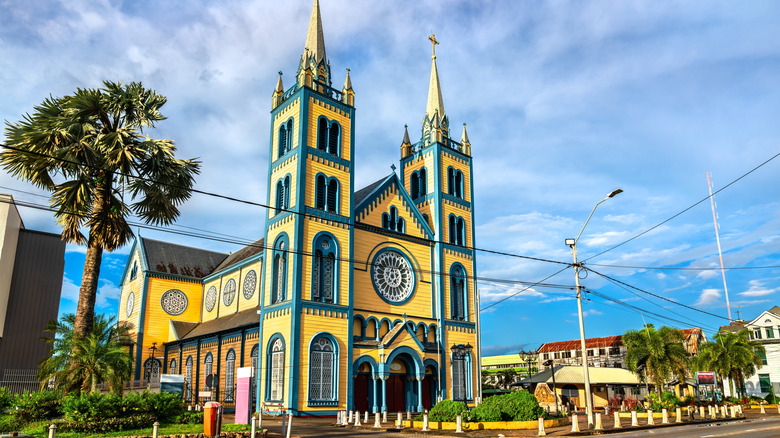
Tucked away in South America, bordering Brazil, French Guiana, and Guyana, is a destination like no other. Dubbed "the world's greenest country" thanks to its immense forests, in 2020, over 94% of Suriname's landmass was made up of natural forests, according to Global Forest Watch, surpassing every other country in the world. If you're a nature and wildlife lover, Suriname needs a spot on your South American bucket list. It's not just its unparalleled nature that makes this little-visited country a must-visit;
with Indigenous, African, Asian, and European influences, it's also a one-of-a-kind cultural destination.
To visit, fly into the Johan Adolf Pengel International Airport, also known as Paramaribo-Zanderij, the country's largest airport. Direct flights are limited, with the majority of monthly flights coming from Amsterdam, Georgetown, Panama City, or Belém, Brazil's creative city of gastronomy. To enter Suriname, there is an entry fee of $25 for travelers from the U.S. at the time of this writing.
As a result of its dense forests, there aren't many roads running across certain regions of Suriname, so in some cases, you may have to use charter planes to navigate around the country. To reach Suriname's remote villages, you'll need to travel by dugout canoe. Temperatures are fairly consistent throughout the year thanks to its location near the equator, but Suriname does experience wet and dry seasons. Although it rains year-round, the driest months to visit are August to November and February to April. May to July typically gets the most rain.
Read more: Think Twice Before Visiting These Dangerous South American Destinations
Beaches And Incredible Nature Of Suriname

Of Suriname's many paradisal beaches, Overbridge stands above the rest, with its sandy shoreline along the Suriname River, set among the untouched forests of the Amazon. White Beach, located near the village of Witagron, is another riverfront gem for everything from swimming to birdwatching in unspoiled nature. And this is just the tip of the iceberg when it comes to pristine nature in Suriname.
Unsurprisingly, Suriname is brimming with gorgeous parks and nature reserves. The wildlife-filled Brownsberg Nature Park is a must-visit, where you can see animals like red howler and black spider monkeys. Don't skip one of the country's most significant areas of conservation, the Central Suriname Nature Reserve. As Suriname's largest, it is home to pumas, jaguars, ocelots, tapirs, and giant river otters. Kabalebo Nature Reserve is yet another highlight for wildlife spotting, offering activities like guided walks, kayaking, swimming, and birdwatching.
Another one of Suriname's stand-outs is undoubtedly its turtle nesting, which can be best observed from Matapica Beach. From February to May, witness the nesting of green turtles, or try to spot leatherback babies from April to July. Along the Upper Suriname River, you'll find some of the world's most ethereal waterfalls set against lush jungle landscapes, like Wonotobo Falls, which are among the largest in the country.
Cultural Experiences In Suriname

With a unique blend of Indigenous, African, Asian, and Dutch cultures, Suriname's social fabric is like no other. Suriname's multicultural identity is especially apparent in Paramaribo, the country's capital city. Here, you'll find synagogues, mosques, churches, and Hindu temples, set amongst Dutch-Creole architecture and a vibrant food scene, with numerous street markets, selling Javanese, Chinese, Indian, and Creole dishes.
Dutch is the official language, but you'll likely hear Sranan Tongo, a creole language, as well. Don't skip visiting the numerous villages scattered along the Suriname River, occupied by Saamaka (or Saramacca) communities — descendants of people who escaped from slavery and have lived in the area for centuries, maintaining many traditions and customs. Visit Kwamalasamutu, a Tiriyó community nestled on Sipaliwini River, to see ancient rock carvings that are likely over 4,000 years old. For another fascinating historical excursion, head to Jodensavanne, an abandoned town and UNESCO World Heritage Site that was once home to one of the oldest Jewish communities in the Americas.
Ready to discover more hidden gems and expert travel tips? Subscribe to our free newsletter for access to the world's best-kept travel secrets.
Read the original article on Islands.













